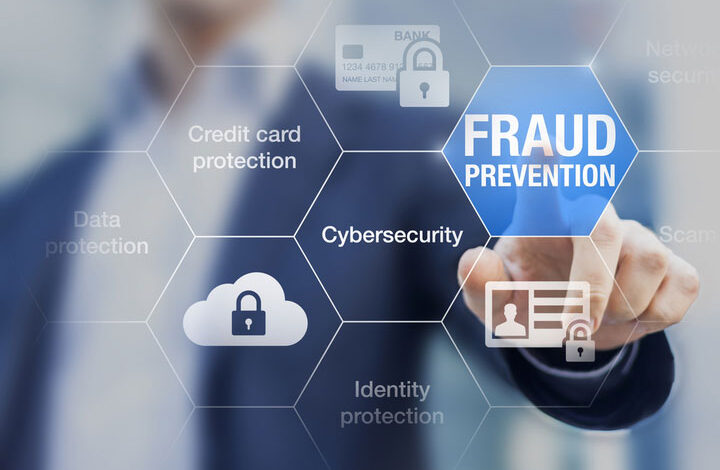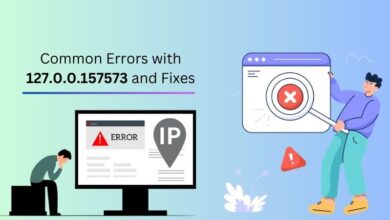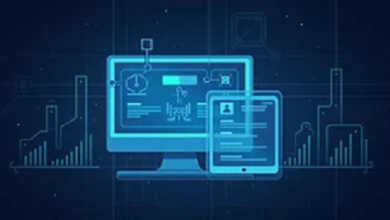Tech Fraud – Detection and Protection

Tech fraud detection and prevention refers to the methods and technologies used to identify and prevent fraudulent activity in the technology industry. This can include a wide range of activities such as identity theft, hacking, phishing, and financial fraud.
As technology continues to advance and more transactions are conducted online, the risk of tech fraud has increased. It is important for companies and individuals to implement measures for detecting and preventing tech fraud in order to protect sensitive information and financial assets.
We’re going to discuss the new tech methods of detecting fraud and some safe prevention practices.
Ways to Detect Tech Fraud
Cross-device monitoring
Cross-device monitoring is a technique used to detect tech fraud by tracking and analyzing the behavior of users across multiple devices. This can be used to identify patterns of suspicious activity and detect fraud.
Here are a few ways that cross-device monitoring can detect tech fraud:
- Device Fingerprinting: This involves identifying a user’s device by analyzing various characteristics such as the device’s IP address, browser settings, and installed fonts. This information can be used to track a user’s activity across multiple devices and detect if multiple devices are being used by the same user in a suspicious manner.
- Location Tracking: This involves tracking a user’s location across multiple devices. This can be used to detect if a user is logging into an account from multiple locations at the same time, which can be an indication of fraud.
- Behavioral Analysis: This involves analyzing a user’s behavior across multiple devices to detect suspicious patterns. For example, if a user is logging into an account from multiple devices and making multiple purchases, this could be an indication of fraud.
- Device Linking: This involves linking multiple devices to a user’s account and monitoring activity on those devices to detect suspicious activity. This can be used to detect if a user is logging into an account from multiple devices at the same time, which can be an indication of fraud.
By using cross-device monitoring, companies and organizations can have a more comprehensive view of the user’s behavior, and detect patterns of suspicious activity that would be difficult to detect using traditional monitoring methods.
IP tracking
IP tracking is a technique used to detect fraud by tracking and analyzing the IP addresses of users. This can be used to identify patterns of suspicious activity and detect fraud. Here are a few ways that IP tracking can detect fraud:
- Identifying Proxies and VPNs: Fraudsters often use proxies and VPNs to hide their true location and IP address. IP tracking can detect when a user is accessing an account from a proxy or VPN and flag it as suspicious activity.
- Geolocation: IP tracking can be used to track the physical location of a user by analyzing the IP address. This can be used to detect if a user is logging into an account from a location that is unexpected or different from their usual location.
- IP Reputation: IP Reputation is a way of analyzing the history of an IP address, and it can be used to detect if an IP address has a history of being associated with fraudulent activity.
- IP pooling: IP pooling is a technique used by some organizations to share IP addresses among multiple devices, this can make it more difficult for fraudsters to be tracked down.
- Block known fraudsters: IP tracking can be used to block known fraudsters from accessing an account by identifying their IP addresses and denying them access.
By using IP tracking, companies and organizations can have a more comprehensive view of a user’s activity, and detect patterns of suspicious activity that would be difficult to detect using traditional monitoring methods. However, it’s important to keep in mind that IP addresses can be easily spoofed, and it’s not a foolproof method to detect fraud.
Data encryption
Data encryption is a technique used to protect sensitive information by converting it into a code that can only be accessed by authorized individuals. While data encryption is primarily used as a preventative measure, its main purpose is to protect sensitive information.
It does this by detecting when data has been tampered with, logging all access attempts to sensitive information, and preventing data leakage by barring unauthorized access to sensitive information.
Two-factor authentication
Two-factor authentication (2FA) is a method of confirming a user’s identity by requiring them to provide two forms of identification. This is usually a combination of something the user knows, such as a password, or a one-time code, and something the user has, such as a security token or a fingerprint.
2FA is primarily used as a preventative measure to protect against unauthorized access, but it can also be used to detect fraud in certain situations.
Facial recognition software
Facial recognition is a technology that uses biometric data to identify and authenticate individuals.
It uses AI algorithms to match a person’s facial features to a photograph or digital image and can be used as a form of two-factor authentication to help detect fraud in certain situations.
How to Prevent Tech Fraud
Preventing tech fraud requires a combination of technical measures and best practices to minimize the risk of fraudulent activity. Here are a few ways that tech fraud can be prevented:
- Implement strong security protocols: This includes using encryption, firewalls, and secure passwords to protect sensitive information and prevent unauthorized access.
- Educate employees and users: Train employees and users on how to recognize and report suspicious activity and how to avoid falling victim to phishing and other scams.
- Implement fraud detection and prevention software: This can include using anomaly detection, behavioral biometrics, network security monitoring, and other techniques to detect and prevent fraud.
- Implement two-factor authentication: This can include requiring users to provide two forms of identification, such as a password and a fingerprint or a security token, in order to access sensitive information.
- Monitor transactions and activity: Regularly monitor transactions and activity for signs of fraudulent behavior and take action if suspicious activity is detected.
- Keep software and systems updated: Regularly update software and systems to ensure that they are protected against known vulnerabilities.
- Conduct regular risk assessments: Regularly assess the potential risks of fraud and implement countermeasures to mitigate those risks.
- Use cross-device monitoring: this can help to detect patterns of suspicious activity that would be difficult to detect using traditional monitoring methods, and in this way, take action before the fraud happens.
By implementing these measures, companies and organizations can greatly reduce the risk of tech fraud and protect sensitive information and financial assets.
Conclusion
In conclusion, tech fraud detection and prevention is an important aspect of protecting sensitive information and financial assets in today’s digital age. As technology continues to advance and more transactions are conducted online, the risk of tech fraud has increased.
Therefore, it’s essential for companies and individuals to implement measures for detecting and preventing tech fraud in order to protect sensitive information and financial assets.





